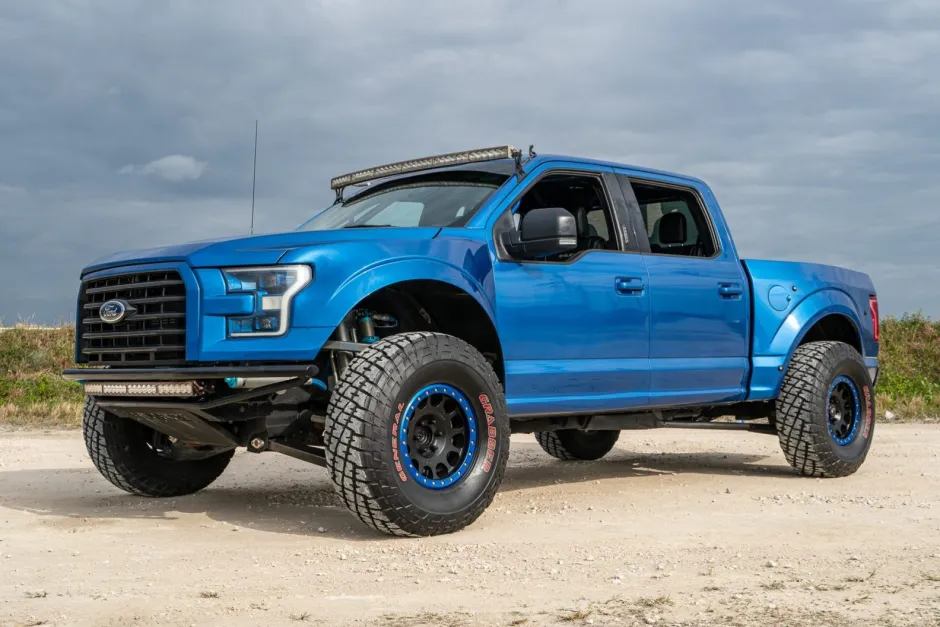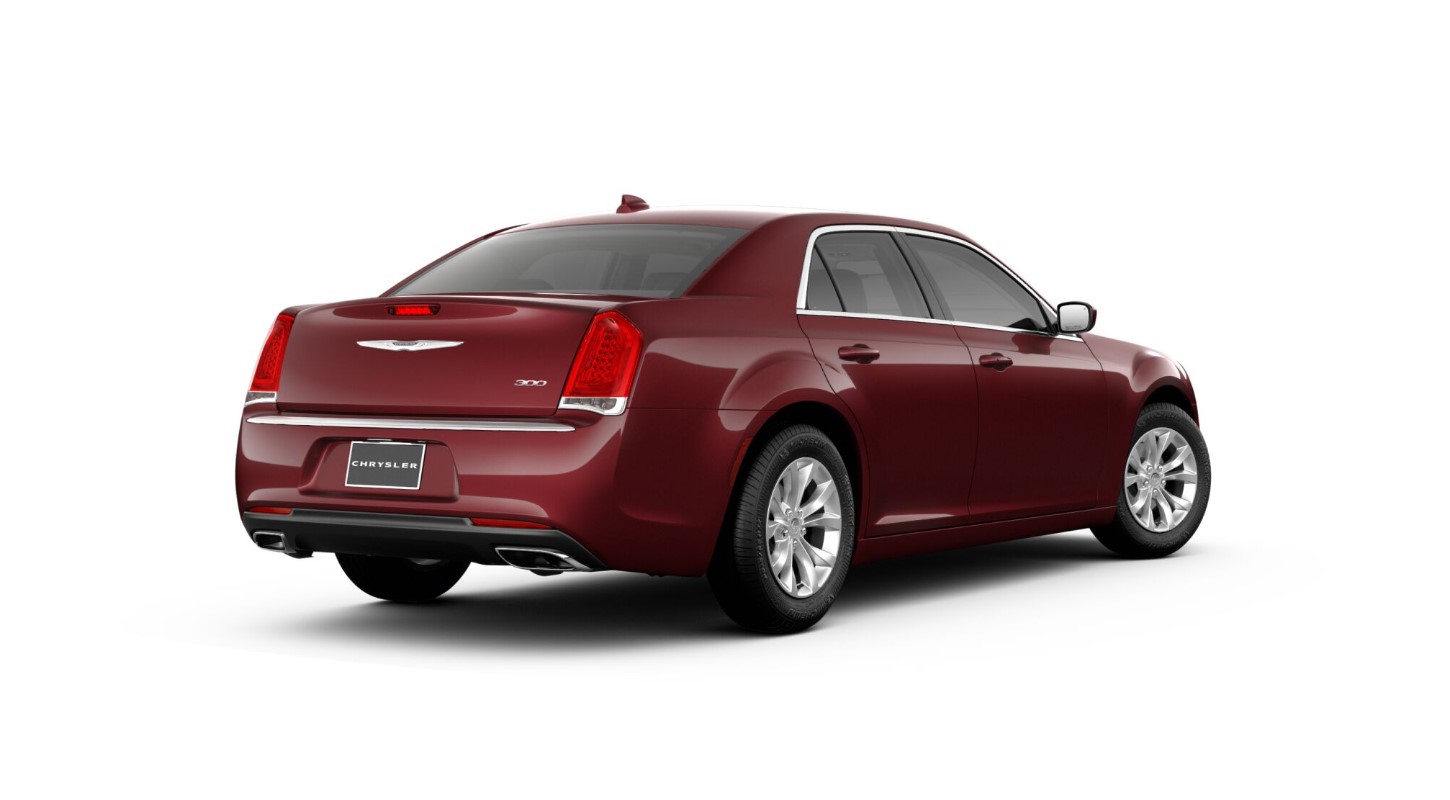The cabin air filter serves as your vehicle’s respiratory system, protecting passengers from dust, pollen, exhaust fumes, and other airborne contaminants. However, not all cabin air filters are created equal when it comes to accessibility.
Understanding the difference between easily accessible filters and those requiring extensive disassembly can save you time, money, and frustration during maintenance.
Automotive manufacturers design cabin air filter placement based on various factors including space constraints, cost considerations, and engineering priorities.
Some prioritize user-friendly maintenance with filters placed behind simple glove box panels or under easily removable covers. Others integrate filters deep within HVAC systems, requiring removal of dashboard components, center consoles, or even entire air handling units.
The accessibility factor significantly impacts maintenance costs and frequency. Easy-access filters encourage regular replacement, promoting better air quality and HVAC system longevity.
Conversely, difficult-to-reach filters often lead to neglected maintenance, resulting in reduced air quality, decreased system efficiency, and potential costly repairs.
This comprehensive guide examines ten vehicles representing both ends of the accessibility spectrum. We’ll explore five models with remarkably easy filter access and five requiring significant disassembly.
Understanding these differences helps consumers make informed decisions about vehicle purchases and maintenance planning, ensuring optimal cabin air quality regardless of their mechanical expertise or available time for DIY maintenance.
Easy Access Cabin Air Filters
These thoughtfully designed vehicles feature cabin air filters positioned with DIY maintenance in mind, allowing owners to complete replacements in minutes using basic tools or even bare hands.
Their intelligent placement behind easily removable glove boxes or simple access panels eliminates the need for special equipment, making routine filter changes as straightforward as changing engine air filters.
Clear filter orientation markings and fool-proof installation guides ensure proper replacement without confusion, while generous access space prevents the cramped conditions that complicate maintenance in lesser designs.
Owners appreciate completing this routine maintenance task quickly and affordably, with many reporting satisfaction from handling their own filter changes without expensive dealership service appointments.
1. Honda Civic (2016-2021)
The Honda Civic represents the gold standard for cabin air filter accessibility, demonstrating how thoughtful engineering can prioritize user convenience without compromising functionality.
Located directly behind the glove box, this filter requires no tools and takes less than five minutes to replace, making it accessible to virtually any vehicle owner regardless of mechanical experience.
The replacement process begins by opening the glove box and removing its contents. The glove box itself detaches by squeezing the side panels inward while pulling gently outward, revealing the cabin air filter housing immediately behind.
A plastic cover secured by simple clips protects the filter element. These clips require only finger pressure to release, eliminating the need for any tools or special equipment.
The filter housing design incorporates visual indicators showing proper installation direction, preventing incorrect placement that could reduce filtration efficiency.
The rectangular filter slides out smoothly along built-in guides, and the new filter installation follows the reverse process with equal simplicity. The entire system demonstrates Honda’s commitment to user-friendly maintenance, encouraging regular filter replacement that maintains optimal air quality.

This accessibility design offers numerous advantages beyond convenience. Easy access promotes adherence to recommended replacement intervals, typically every 12,000-15,000 miles or annually.
Regular replacement maintains HVAC system efficiency, reduces strain on the blower motor, and ensures consistent air quality for passengers. The simple process also enables quick seasonal changes, such as switching to higher-efficiency filters during high-pollen seasons.
The Honda Civic’s design philosophy extends beyond mere convenience to practical cost savings. Professional replacement typically costs $50-80, including labor, while DIY replacement costs only the filter price, usually $15-25. This accessibility can save hundreds of dollars over the vehicle’s lifetime while ensuring optimal air quality.
The engineering behind this accessibility involves careful space allocation during vehicle design. Honda engineers positioned the filter housing to maximize accessibility while maintaining structural integrity and crash safety requirements.
The glove box removal mechanism uses durable clips designed for repeated use without degradation, ensuring long-term reliability of the access system itself.
Professional technicians appreciate this design for its efficiency during routine maintenance visits. The quick access allows more time for thorough vehicle inspections and other maintenance tasks, improving overall service quality.
This design has influenced other Honda models and demonstrates how prioritizing user accessibility can enhance the overall ownership experience without compromising vehicle performance or safety.
2. Toyota Camry (2018-2023)
The Toyota Camry’s cabin air filter accessibility represents innovative engineering that challenges traditional placement conventions. Unlike most vehicles that position cabin filters within the passenger compartment, the Camry places its filter under the hood with external access, creating an exceptionally user-friendly maintenance experience that requires no interior disassembly whatsoever.
Located on the passenger side of the engine bay, the cabin air filter housing sits behind a marked plastic panel near the windshield base. This positioning protects the filter from engine heat while maintaining easy accessibility.
The housing cover features a simple quarter-turn fastener system that requires no tools fingers alone can operate the plastic screws that secure the cover.
The under-hood placement offers unique advantages over traditional interior-mounted systems. Weather protection comes from the hood itself, while the external location prevents interior trim removal and potential damage to dashboard components.
The filter element slides out horizontally once the cover removes, guided by molded channels that prevent binding or misalignment during installation.
Toyota’s design incorporates excellent drainage around the filter housing, preventing water accumulation that could lead to mold or mildew growth. Rubber seals around the housing perimeter maintain weatherproof integrity while allowing easy cover removal.

The filter orientation remains obvious through directional arrows molded into both the housing and filter frame, eliminating guesswork during installation.
This accessibility design particularly benefits fleet managers and service technicians who appreciate the speed and simplicity of external access. No interior protection or cleanup is required, and the process works equally well in various weather conditions.
The under-hood location also allows for easier inspection of filter condition without complete removal, enabling more informed replacement decisions.
The maintenance interval for the Camry’s cabin air filter follows Toyota’s standard recommendation of every 12,000 miles, but the easy access encourages more frequent inspection and replacement when needed.
Urban driving conditions or dusty environments may necessitate more frequent changes, and the simple access makes such adjustments practical for most owners.
Quality control benefits from this design as well. The external mounting reduces contamination risks during replacement, and the clear visual access allows proper verification of filter seating and orientation.
The housing design prevents debris from falling into the HVAC system during maintenance, a common concern with interior-mounted systems. Toyota’s engineering team carefully considered airflow dynamics when developing this external mounting system.
The filter position maintains optimal air intake positioning while ensuring adequate filtration before air enters the HVAC system. The design achieves equivalent filtration efficiency to interior-mounted systems while dramatically improving accessibility.
3. Subaru Outback (2015-2019)
The Subaru Outback’s cabin air filter design exemplifies practical engineering focused on owner convenience and long-term reliability. Positioned behind a removable dashboard panel on the passenger side, this system requires only basic hand tools and minimal disassembly, making it accessible to most vehicle owners while maintaining professional service efficiency.
The filter housing integrates into the lower dashboard area, protected by a rectangular plastic panel secured with four Phillips head screws. These screws use standard threading and require only a basic screwdriver for removal.
The panel design includes subtle finger grips that facilitate removal once the screws are loosened, preventing the need for prying tools that could damage surrounding trim.
Subaru’s approach balances accessibility with protection, ensuring the filter remains properly sealed within the HVAC system while providing reasonable access for maintenance.
The housing design incorporates a sliding drawer mechanism that extends outward once the access panel removes, bringing the filter element into clear view and easy reach.
The filter replacement process demonstrates thoughtful engineering throughout. After removing the access panel screws, the drawer mechanism slides out approximately six inches, revealing the filter element secured by spring clips.
These clips require minimal force to operate but provide secure retention during vehicle operation. The filter element lifts straight up once the clips release, and installation reverses the process with clear tactile feedback confirming proper seating.

This design offers several practical advantages for Subaru owners. The dashboard-level access eliminates the need to reach into tight spaces or remove larger interior components.
The drawer mechanism protects the filter during installation while providing clear visual confirmation of proper positioning. The spring clip retention system ensures secure mounting without overtightening concerns.
Professional service benefits include predictable labor times and minimal risk of interior damage during maintenance. The accessible location allows technicians to complete filter replacement quickly while performing other dashboard-area maintenance tasks.
The design also facilitates easy inspection without complete removal, enabling condition-based replacement decisions. The Outback’s filter housing incorporates excellent sealing characteristics that prevent unfiltered air bypass while maintaining easy access.
Multiple rubber seals create positive pressure boundaries around the filter perimeter, ensuring all incoming air passes through the filtration media. The housing design also includes condensation drainage features that prevent moisture accumulation around the filter area.
Subaru’s engineering team considered long-term durability when developing this access system. The screws use corrosion-resistant coating and standard threading that remains serviceable throughout the vehicle’s lifetime. The access panel design resists warping or cracking, maintaining proper fit and appearance even after multiple removals.
4. Nissan Altima (2019-2023)
The Nissan Altima employs an ingenious glove box drop-down system that provides exceptional cabin air filter access while maintaining interior aesthetics and functionality.
This design represents evolved thinking about passenger compartment access, creating a maintenance-friendly system that requires no tools and minimal time while preserving the integrity of interior components.
The system utilizes the glove box’s natural hinge mechanism enhanced with additional support features that allow controlled lowering beyond normal opening limits.
Two plastic support straps connect the glove box sides to the dashboard structure, preventing over-extension while providing secure support during filter access. These straps incorporate quick-release mechanisms that disengage with simple finger pressure.
Accessing the cabin air filter begins with opening the glove box fully and locating the support strap release points on each side. Gentle pressure on these release points allows the glove box to drop down approximately four inches beyond its normal travel, revealing the cabin air filter housing directly behind the upper glove box area.
This positioning provides excellent visibility and access without requiring complete glove box removal. The filter housing design complements the drop-down access system perfectly. A hinged cover secured by a single plastic clip protects the filter element while providing tool-free access.
The clip design requires only finger pressure to operate but maintains secure closure during normal vehicle operation. The cover swings open on integral hinges, staying attached to prevent loss while providing full access to the filter compartment.

Nissan’s filter element design incorporates handling features that simplify replacement. Molded tabs on the filter frame provide secure grip points while directional arrows ensure proper installation orientation.
The filter slides into grooved guides that prevent binding and ensure proper seating against sealing surfaces. Visual alignment marks confirm correct positioning before the housing cover closes.
This accessibility system offers significant advantages for both professional service and owner maintenance. The drop-down mechanism requires no tools and operates smoothly even after years of use.
The support strap system prevents accidental damage while providing stable access platform for filter replacement. The design also allows easy inspection of filter condition without complete removal.
Professional technicians appreciate the Altima’s system for its speed and reliability. The predictable access method reduces service time while the secure support system prevents interior damage during maintenance.
The design also facilitates other dashboard area service tasks by providing improved access to surrounding components. The engineering behind this system addresses common problems with traditional glove box access methods.
Many vehicles require complete glove box removal, creating potential for lost hardware or damaged connections. The Altima’s controlled drop-down method maintains all connections while providing equivalent access, reducing service complexity and potential problems.
Quality control benefits from this design through improved filter seating verification and reduced contamination risk during replacement. The open access allows clear visual confirmation of proper installation while the controlled environment reduces debris introduction into the HVAC system.
Also Read: 5 Rear Differentials That Need Zero Service And 5 That Eat Fluid Quickly
5. Ford F-150 (2015-2020)
The Ford F-150’s cabin air filter design demonstrates how truck-specific packaging can create surprisingly accessible maintenance points while accommodating the unique space constraints and functional requirements of pickup truck interiors.
Located within the center console area, this system provides tool-free access that rivals passenger car convenience while maintaining the rugged reliability expected in commercial-grade vehicles.
The filter housing integrates into the lower center console structure, positioned behind a removable panel that blends seamlessly with the interior design.
This panel secures with quarter-turn fasteners that operate by hand, eliminating tool requirements while providing secure retention during vehicle operation.
The fastener design uses large plastic tabs that provide adequate grip even with work gloves, acknowledging the truck’s commercial applications.
Access begins by removing the center console’s lower storage tray, which lifts out without fasteners or clips. This tray removal reveals the filter access panel immediately behind, clearly marked with filter replacement instructions and interval recommendations.
The panel design incorporates finger grips that facilitate removal once the quarter-turn fasteners release. Ford’s filter housing design addresses the unique challenges of truck environments, including increased dust exposure and temperature extremes.
The housing incorporates robust sealing systems that prevent bypass while maintaining easy access for maintenance. Multiple drainage points prevent moisture accumulation, crucial for vehicles frequently exposed to harsh weather conditions.

The filter element design reflects commercial-grade requirements with enhanced filtration capacity and durability. The larger filter surface area provides extended service intervals appropriate for high-mileage commercial use while maintaining excellent filtration efficiency.
Installation guides molded into the housing ensure proper orientation even in low-light conditions common during field maintenance. This accessibility design particularly benefits fleet operators and commercial users who perform their maintenance.
The center console location remains accessible even with work equipment or tool boxes occupying other interior areas. The tool-free access enables roadside filter replacement if necessary, supporting vehicles operating in extremely dusty conditions.
Professional service advantages include predictable access and minimal interior disruption during maintenance. The center console location allows simultaneous access to other maintenance points while the removable tray design prevents small parts loss.
The robust fastener system maintains integrity even with frequent access cycles expected in commercial applications. The F-150’s filter system incorporates excellent airflow management that maintains HVAC efficiency while accommodating the larger interior volume typical of truck cabins.
The housing position optimizes air distribution while ensuring adequate filtration for both front and rear passenger areas. Engineering considerations include vibration resistance and temperature cycling durability essential for truck applications.
Ford’s design team considered long-term serviceability when developing this access system. The quarter-turn fasteners resist corrosion and maintain operation even after extended exposure to road salt and harsh weather. The access panel design prevents warping or cracking while maintaining proper sealing characteristics throughout the vehicle’s service life.
Complex Access Cabin Air Filters Requiring Disassembly
These poorly designed vehicles bury their cabin air filters behind dashboard components that require extensive disassembly, transforming a simple maintenance task into an expensive professional service.
Their inexplicable placement often demands removal of steering wheels, dashboard panels, or entire climate control assemblies creating labor costs that frequently exceed the filter price by enormous margins.
What should be a routine DIY maintenance item instead becomes a dealership-dependent expense, with many owners reporting service quotes exceeding $200 for what amounts to a $15 filter replacement.
The engineering decision to prioritize other considerations over serviceability creates ongoing frustration for cost-conscious owners who prefer handling routine maintenance themselves but find themselves forced into expensive professional service.
1. BMW 3 Series (2012-2018)
The BMW 3 Series represents the most challenging cabin air filter replacement scenario, requiring extensive dashboard disassembly that transforms a simple maintenance task into a complex, multi-hour procedure demanding professional expertise and specialized tools.
This design prioritizes interior aesthetics and space efficiency over maintenance accessibility, creating significant challenges for both vehicle owners and service technicians.
The cabin air filter housing integrates deep within the HVAC system, positioned behind the central dashboard structure and requiring removal of multiple interior components for access.
The process begins with disconnecting the battery and removing the glove box assembly completely, including all mounting brackets and electrical connections.
This initial step alone requires careful attention to multiple fastener types and connector locations that vary depending on specific trim levels and option packages.
Following glove box removal, the central dashboard panel must be carefully separated from the instrument cluster housing. This process involves removing the radio/navigation unit, climate control assembly, and associated trim pieces.
Each component connects through specific electrical connectors that require proper identification and careful handling to prevent damage. The dashboard structure itself secures through multiple hidden fasteners located behind trim pieces and within difficult-to-access mounting points.
The complexity increases significantly when accessing the filter housing itself. BMW engineers positioned the filter within the HVAC plenum chamber, requiring partial removal of the entire climate control unit.
This process involves disconnecting refrigerant lines, requiring proper recovery and recharging procedures that demand specialized equipment and EPA certification. The labor intensity of this process makes professional service essential for most owners.

The filter element itself, once accessed, appears deceptively simple to replace. However, the installation process requires precise alignment with multiple sealing surfaces and proper orientation to prevent air bypass.
The housing design incorporates complex geometry that makes filter positioning critical for proper HVAC function and air quality performance. Professional service of BMW 3 Series cabin air filters typically requires 4-6 hours of labor, making it one of the most expensive routine maintenance procedures.
The complexity demands experienced technicians familiar with BMW’s specific procedures and potential complications. Special tools required include dashboard removal fixtures, electrical connector tools, and refrigerant handling equipment.
The engineering rationale behind this complex design stems from BMW’s prioritization of interior space utilization and aesthetic integration. The deep filter placement allows for a larger filter surface area within constrained packaging while maintaining the sleek interior design BMW customers expect.
However, this prioritization creates significant maintenance challenges that impact long-term ownership costs. Quality control during reassembly becomes critical due to the numerous connections and adjustments required.
Proper electrical reconnection, dashboard alignment, and HVAC system integrity all require careful verification. Incorrect reassembly can result in electrical problems, air leaks, or interior rattles that may not become apparent until after service completion.
The impact on maintenance frequency proves significant, as the complexity and cost often lead to extended service intervals beyond manufacturer recommendations.
This deferred maintenance can result in reduced air quality, HVAC system strain, and potentially expensive repairs that could be prevented with regular filter replacement.
2. Mercedes-Benz C-Class (2015-2021)
The Mercedes-Benz C-Class cabin air filter design exemplifies German engineering’s focus on integration and precision while creating substantial maintenance challenges that require professional expertise and considerable time investment.
The filter’s location deep within the climate control system necessitates removal of multiple interior components, transforming routine maintenance into a complex procedure that tests both patience and technical skill.
The replacement process begins with complete center console removal, starting with the gear selector surround and extending to the entire console assembly.
This initial phase requires careful attention to multiple electrical connections serving USB ports, charging systems, seat controls, and various comfort features. Each connection uses specific BMW-style connectors that require proper release techniques to prevent damage.
Following console removal, access to the climate control unit requires removing the radio/navigation assembly and associated control modules. The Mercedes COMAND system integrates extensively with vehicle systems, requiring careful disconnection procedures and proper handling to prevent expensive electronic damage.
The unit’s removal reveals additional mounting points and connections that secure the climate control housing. The climate control unit itself presents significant complexity, incorporating multiple servo motors, temperature sensors, and air distribution components that must be carefully disconnected for filter access.
Mercedes engineers integrated these systems tightly to maximize efficiency and minimize space requirements, but this integration creates maintenance challenges that require detailed system knowledge.

The filter housing location within the climate unit demands partial disassembly of the air distribution system. This process involves removing air ducts, temperature blend doors, and associated actuator mechanisms.
Each component requires specific handling procedures to prevent calibration loss or mechanical damage that could affect system operation. Professional service typically requires 5-7 hours of labor, making this one of the most time-consuming routine maintenance procedures on luxury vehicles.
The complexity demands Mercedes-trained technicians with access to proper diagnostic equipment and service information. Specialized tools include console removal fixtures, electrical system testers, and climate system calibration equipment.
The filter element design reflects Mercedes’ attention to air quality, incorporating multiple filtration layers and activated carbon elements for superior contaminant removal.
However, the complex installation process requires precise positioning and careful attention to sealing surfaces to prevent air bypass that could compromise filtration efficiency.
Reassembly challenges include proper calibration of climate control actuators, electrical system verification, and interior component alignment. Mercedes vehicles incorporate extensive self-diagnostic systems that can detect improper installation or component malfunctions, potentially triggering warning lights or system shutdowns if reassembly procedures aren’t followed precisely.
The engineering philosophy behind this design prioritizes system integration and operational efficiency over maintenance accessibility. Mercedes customers typically expect professional service for complex procedures, making the design acceptable within the luxury vehicle market segment.
However, the complexity significantly impacts long-term ownership costs and service planning requirements. Quality control becomes particularly critical due to the numerous systems affected during disassembly.
Proper testing of climate control operation, electrical system function, and interior component operation requires comprehensive verification procedures that extend service time beyond the actual filter replacement process.
3. Audi A4 (2017-2022)
The Audi A4’s cabin air filter design represents one of the most technically challenging maintenance procedures in modern automotive service, requiring access through the engine bay and partial firewall disassembly that tests even experienced technicians’ skills and patience.
This design prioritizes interior packaging efficiency and aesthetic integration while creating significant maintenance complexity that impacts both service costs and interval adherence.
The filter housing integrates into the firewall structure between the engine bay and passenger compartment, requiring extensive engine bay component removal for access.
The process begins with removing the engine cover, air intake system, and various engine accessories that obstruct firewall access. This preliminary work alone requires careful attention to multiple connector types and mounting systems specific to Audi’s engineering approaches.
Following engine bay preparation, firewall access requires removing portions of the cowl panel and associated weather sealing systems. The cowl panel design incorporates complex geometry that integrates with wiper mechanisms, hood hinges, and various service access points.
Removal requires specific procedures to prevent damage to surrounding components and maintain proper water management systems. The filter housing itself sits within a recessed area of the firewall, requiring partial removal of HVAC ductwork and associated mounting brackets.
Audi engineers positioned the housing to optimize interior space utilization while maintaining filtration efficiency, but this positioning creates access challenges that require specialized tools and extensive disassembly procedures.

Professional service typically requires 6-8 hours of labor, representing one of the most time-intensive routine maintenance procedures available. The complexity demands Audi-trained technicians with access to specialized tools and current service information.
Required equipment includes engine bay access fixtures, cowl panel removal tools, and various specialty fastener drivers specific to Audi applications.
The filter element design incorporates Audi’s advanced filtration technology, including multiple media layers and activated carbon components for superior air quality performance.
However, the installation process requires precise alignment with complex sealing surfaces and proper orientation within the constrained housing space. Incorrect installation can result in air bypass, reduced filtration efficiency, or system damage.
Reassembly challenges include proper sealing of weather management systems, correct routing of HVAC ductwork, and verification of all engine bay component installations.
The firewall area incorporates multiple sealing systems that prevent water intrusion and maintain climate control efficiency. Improper reassembly can result in water leaks, air leaks, or electrical problems that may not become apparent until adverse weather conditions occur.
The engineering rationale behind this design stems from Audi’s commitment to interior space maximization and system integration efficiency. The firewall mounting allows for larger filter surface area while maintaining compact interior packaging.
However, this engineering priority creates maintenance challenges that significantly impact ownership costs and service requirements. Quality control procedures must address multiple systems affected during disassembly, including engine management, climate control, and weather protection systems.
Comprehensive testing requires verification of proper operation across all affected systems, extending service time and complexity beyond the actual filter replacement procedure.
The impact on maintenance intervals proves significant, as the complexity and cost often discourage adherence to recommended replacement schedules.
Extended service intervals can result in reduced air quality, HVAC system strain, and potential component failures that could be prevented with regular maintenance.
4. Volkswagen Passat (2012-2019)
The Volkswagen Passat’s cabin air filter design creates a maintenance challenge that requires systematic disassembly of multiple interior components, demonstrating how seemingly simple procedures can become complex when accessibility isn’t prioritized during vehicle design.
This system demands patience, organization, and careful attention to detail while providing insights into the trade-offs between packaging efficiency and maintenance practicality.
The replacement process begins with complete removal of the lower dashboard panel on the passenger side, which requires disconnecting multiple electrical connectors serving various comfort and convenience features.
These connections include courtesy lighting, power outlets, and diagnostic connectors that use Volkswagen’s specific connector designs. Each connection requires proper identification and careful handling to prevent terminal damage or connector housing cracking.
Following lower panel removal, access to the filter housing requires removing portions of the center console and associated trim pieces. The console design integrates with multiple vehicle systems, including seat controls, climate settings, and various storage compartments.
Each component connects through specific mounting systems that require proper tool selection and removal techniques to prevent damage to surrounding interior elements.
The filter housing location necessitates partial removal of the HVAC distribution system, including air ducts and temperature control mechanisms.
Volkswagen’s climate control design incorporates multiple servo motors and sensor systems that must be carefully disconnected to access the filter compartment. These components require specific handling procedures to maintain calibration and prevent operational problems after reassembly.

Professional service typically requires 4-5 hours of labor, making this procedure significantly more complex than standard maintenance tasks. The process demands Volkswagen-trained technicians familiar with the specific procedures and potential complications.
Specialized tools include interior panel removal fixtures, electrical connector tools, and various fastener drivers designed for Volkswagen applications.
The filter element itself incorporates Volkswagen’s multi-stage filtration technology, including particle filtration and odor reduction capabilities. However, the installation process requires careful attention to orientation markings and proper seating against multiple sealing surfaces.
The constrained access makes verification of proper installation challenging, requiring systematic checking of all sealing points. Reassembly complexity includes proper routing of electrical connections, correct positioning of interior panels, and verification of all climate control system operations.
The multiple components removed during access create numerous opportunities for incorrect installation or missed connections. Each component requires individual verification to ensure proper operation and aesthetic appearance.
The engineering philosophy behind this design reflects Volkswagen’s emphasis on interior space utilization and cost-effective manufacturing. The integrated approach reduces component count and simplifies assembly line procedures while creating maintenance challenges that impact long-term ownership experience.
The design represents common trade-offs in modern automotive engineering. Quality control procedures must address the numerous systems affected during disassembly, including electrical systems, climate control operation, and interior component function.
Comprehensive testing requires verification across multiple vehicle systems, extending service time and adding complexity to what should be routine maintenance.
The impact on maintenance adherence proves significant, as the complexity and associated costs often lead to extended service intervals beyond manufacturer recommendations.
This deferred maintenance can result in reduced air quality, increased HVAC system wear, and potential component failures that proper maintenance could prevent.
5. Chrysler 300 (2011-2020)
The Chrysler 300’s cabin air filter design represents perhaps the most comprehensive interior disassembly requirement for routine maintenance, creating a procedure that challenges both professional technicians and ambitious DIY enthusiasts.
This system requires removal of multiple major interior components, transforming a simple filter replacement into a complex procedure that demands careful planning, proper tools, and extensive time commitment.
The replacement process begins with the complete removal of the instrument panel assembly, starting with disconnection of the steering column and associated safety systems.
This initial phase requires careful attention to airbag systems, requiring proper disconnection procedures and safety precautions to prevent accidental deployment.
The steering column adjustment mechanisms and electrical connections demand specific handling procedures to prevent damage to expensive components.
Following steering column removal, the instrument cluster and associated dashboard components require systematic disconnection and removal.
The cluster assembly integrates with multiple vehicle systems, including engine management, transmission control, and various comfort features. Each connection uses specific Chrysler connector designs that require proper tools and techniques for safe removal without terminal or housing damage.
The instrument panel structure itself presents significant complexity, incorporating mounting points throughout the passenger compartment and integrating with multiple vehicle systems.
Removal requires accessing fasteners located behind trim pieces, within door jamb areas, and under carpet sections. The panel’s size and weight require careful handling and adequate workspace to prevent damage during removal and storage.
Access to the filter housing requires additional disassembly of HVAC components located behind the instrument panel. The climate control system incorporates multiple air distribution chambers, temperature control mechanisms, and blower motor assemblies that must be partially disassembled for filter access. Each component requires specific disconnection procedures and careful handling to prevent calibration loss.

Professional service typically requires 8-10 hours of labor, representing one of the most time-intensive routine maintenance procedures in automotive service.
The complexity demands experienced technicians with comprehensive knowledge of Chrysler systems and access to specialized tools. Required equipment includes panel removal fixtures, airbag service tools, and various specialty fastener drivers.
The filter element design incorporates multiple filtration stages and larger surface area to justify the complex access requirements. However, the installation process requires precise positioning within the constrained housing space and careful attention to multiple sealing surfaces.
The limited access makes verification of proper installation particularly challenging. Reassembly presents enormous complexity, requiring systematic reversal of the disassembly process while ensuring proper connection of all electrical systems, correct positioning of all components, and verification of all safety system operations.
The airbag system requires specific procedures and testing to ensure proper function after reassembly. The engineering rationale behind this design stems from cost considerations and packaging constraints that prioritize manufacturing efficiency over maintenance accessibility.
The integrated approach reduces component count and simplifies assembly line procedures while creating significant maintenance challenges that impact ownership experience.
Quality control becomes critical due to the numerous safety-critical systems affected during disassembly. Proper testing must verify airbag system operation, instrument cluster function, climate control operation, and all electrical system performance.
This comprehensive testing extends service time significantly beyond the actual filter replacement procedure. The impact on maintenance intervals proves substantial, as the complexity and cost often result in severely extended service intervals or complete neglect of filter replacement.
This deferred maintenance can lead to poor air quality, HVAC system failures, and expensive repairs that could be prevented with regular maintenance. The design effectively discourages proper maintenance adherence, impacting long-term vehicle reliability and passenger comfort.
Also Read: 5 Windshield Washer Systems That Always Work And 5 That Clog Instantly

